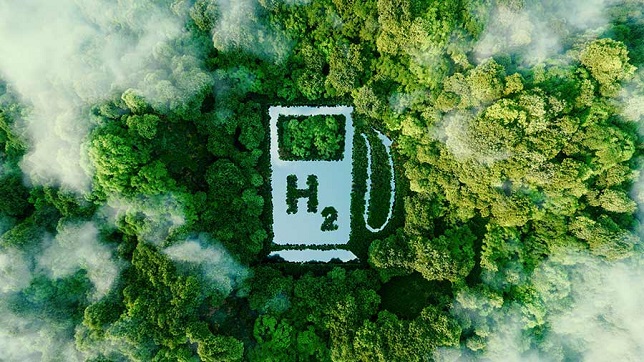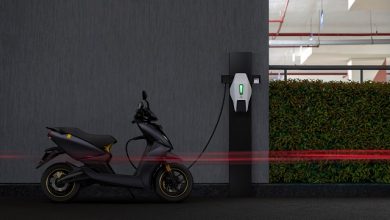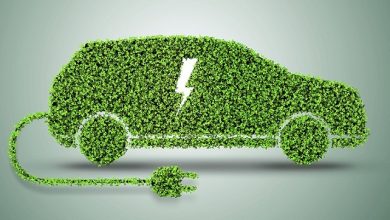Road to sustainable mobility in India with green hydrogen

Globally, we are seeing an increasing interest in fuel cell electric vehicles (FCEV) in the passenger car segment as well as in the heavy-duty commercial vehicle segment. While there are no fuel cell vehicles on sale in India, there is an increasing interest in these vehicles and in the usage of green hydrogen.
Introduction
Hydrogen fuel cell vehicles use electric motors to run the vehicle just like a battery electric vehicle. However, unlike a battery electric vehicle, fuel cell electric vehicles generate the electricity onboard the vehicle using a fuel cell, where hydrogen from the fuel tank combines with oxygen from air to generate electricity.
One of the key reasons why fuel cell vehicles are gaining popularity is due to the fact that drivers can just fill up the fuel tank with hydrogen just like a petrol-powered vehicle. With fuel cell vehicles, there are no long waiting times to charge batteries that owners of battery electric vehicles face. However, the generation of hydrogen is a complicated process making it expensive. Due to the gas-flammability of hydrogen and its ease of dispersion, storage and transportation of hydrogen is also challenging.
The supply chain involved in delivering clean hydrogen fuel cell vehicles includes several players in renewable energy generation, electrolyser manufacturing, hydrogen generation, fuel cell manufacturing, and OEMs.
The Indian Government wants the Country to be a Green Hydrogen Leader
Based on the source and process, hydrogen is classified into different colours. Black or brown hydrogen is produced by coal or lignite gasification, while grey hydrogen is produced by steam methane reformation (SMR). Blue hydrogen is produced by natural gas or coal gasification along with carbon capture storage. Green hydrogen is generated by the electrolysis of water using electricity from a renewable energy source like solar or wind. The electric current is used to split the water molecules into hydrogen and oxygen.
India is beginning to invest heavily into green hydrogen. The current hydrogen production stands at 6.7 million tons per year, which is used by the fertilizer industry and refineries. Presently, the country does not import or export hydrogen. The Energy and Resources Institute (TERI) estimates that the demand in India could reach 23 million tons per year by 2050. The Indian government plans to increase green hydrogen production to become self-reliant in energy production before 2050 to reduce crude oil imports and the dependence on other countries. The government has announced an investment of around Rs. 19,800 crores (USD 2.43 billion) to set up green hydrogen production capacity of 5 million tons per year by 2030. The investment also includes increasing the renewable energy capacity by 125 GW. The current installed capacity is around 160 GW. Around Rs. 1,500 crores (USD 183.74 million) is being set aside for pilot projects and Rs. 400 crores (USD 49 million) for R&D. With this investment, the Indian government aims to decarbonize industrial, mobility, and energy sectors and export green hydrogen and its derivatives.
While the government is encouraging investments in the sector, what will really help the sector grow is the need to enforce laws to attract companies to shift to green hydrogen from other sources. These could include concessional land rates to set up renewable energy parks, concession on green electricity, and PLI scheme to encourage local electrolyser manufacturing.
Growing Interest from Suppliers
Electrolysis of water can be done by two main types of electrolysis methods – Alkaline Electrolysis and Polymer Electrolyte Membrane (PEM) Electrolysis. In India, there are only a handful of companies manufacturing electrolysers. These include Ohmium and Eastern Electrolyser. Ohmium uses only PEM electrolysers as they claim that these are more resistant to the fluctuations that come from renewable energy sources like solar and wind, making them ideal for the production of green hydrogen, while Eastern Electrolyser manufactures PEM and Alkaline electrolysers. Cummins is also working on the technology and showcased an electrolyser at the Auto Expo 2023. A team of researchers from the Indian Institute of Science (IISC) in Bangalore have developed a new technology to produce green hydrogen from biomass. The process produces 100 grams of hydrogen from 1 kg of biomass.
Today, electrolysis of water is expensive, but investments along with the expected support from the government, the cost of producing green hydrogen is likely to decrease in the next few years.
To meet India’s hydrogen production and export targets, many companies are investing in setting up manufacturing plants. Some of these include:
- Adani New Industries and TotalEnergies will invest Rs. 4 lakh crores (USD 49 billion) in green hydrogen over the next 10 years. The initial phase of investment will include adding 1 million tons of production capacity per year.
- Reliance New Energy Limited is collaborating with Stiesdal to manufacture hydrogen electrolysers. The companies will be investing nearly Rs. 50 lakh crores (USD 612.48 billion) in green energy and other projects in Gujarat over the next 10-15 years. The investment will include a 100 GW renewable energy plant.
- L&T commissioned a green hydrogen plant at its AM Naik Heavy Engineering Complex in Hazira, Gujarat. The plant will produce 45 kg of green hydrogen per day and has a capacity of 800 kW (Alkaline electrolyser – 380 kW and PEM electrolyser – 420 kW).
- Indian Oil is building a green hydrogen plant at Mathura refinery. The company plans to add 25 million tonnes of capacity.
- Indian Oil, L&T and ReNew Power formed a joint venture to produce green hydrogen in India. The joint venture will also focus on the production of electrolysers.
- NTPCL is working on a fuel cell-based micro-grid with hydrogen production at NTPC Simhadri in Andhra Pradesh. The plant would use a 240 kW electrolyser which gets its electricity from a nearby solar project, and would also be equipped with a 50kW fuel cell.
- Indian Oil Corporation has scaled up the production technology developed by the Indian Institute of Science to produce 250 kg of hydrogen per day from biomass for use in fuel cell buses.
Just like electrolysers, there are only a handful of companies in India that produce fuel cells. Fuel cells are used in a vehicle to convert the hydrogen stored in a tank to electricity to power the vehicle.
Prominent companies in this field include Sainergy Fuel Cell India and Adar Poonawala-backed h2e Power. Adani Group has signed a MOU with Ballard Power Systems to evaluate a joint investment to manufacture PEM-based hydrogen fuel cells in India for mobility and industrial applications. SFC Energy has tied up with FC TecNrgy to manufacture fuel cells in India. The joint venture will open a manufacturing unit, R&D centre, and a repair centre in Gurugram. EH Group, based in Switzerland, established an Innovation Lab at IIT Madras Research Park to develop fuel cell technologies, with a focus on control systems software. Reliance Industries has also been working on fuel cell technology for the last few years, while Cummins showcased a fuel cell for medium and heavy-duty vehicles at the Auto Expo 2023.
A fuel cell stack is one of the most expensive components in the drivetrain. Today, the fuel cell stacks used in FCEVs are imported, and to bring down costs, localization needs to increase. Localization can also happen in batches, bringing costs down gradually.
But, it is not just the fuel cell stack that needs to be localized. There are other power electronic components, compressors, and cooling systems that contribute to the overall cost of the drivetrain. The cost of these components need to be reduced.
While more announcements are expected, the government could provide incentives to manufacturers of electrolysers and fuel cells to increase manufacturing in India.
Hydrogen Fuel Cells in India’s Mobility Sector
While there are no commercial examples in India, companies have begun building fuel cell vehicles for testing and development. Some of the notable developments in the country include:
- Council of Scientific and Industrial Research and KPIT (Sentinent Labs) have developed India’s first fuel cell bus. The operational cost of the bus is claimed to be less than that of a diesel bus.
- Toyota began a study with MORTH to evaluate the feasibility of fuel cell vehicles in India. Toyota imported a Mirai FCEV to India for the purpose.
- h2e Power is developing India’s first hydrogen-powered three-wheeler which will use a low pressure hydrogen storage technology which is said to cost less. The technology was developed by Canadian hydrogen storage company H2M.
- Toyota supplied one hydrogen fuel cell module to Ashok Leyland to build a fuel cell commercial vehicle for a feasibility study. The commercial vehicle manufacturer showcased a fuel cell electric truck at the 2023 Auto Expo with a PEM fuel cell and a hydrogen carrying capacity of 33.6 kg.
- Toyota also showcased the Corolla Cross Hydrogen Concept prototype and the Mirai at the 2023 Auto Expo in Delhi.
- Hyundai conducted a feasibility study using the Nexo FCEV in India. The car was showcased at the 2020 Auto Expo and the 2023 Auto Expo.
- Ashok Leyland is in talks with Reliance Industries to install Reliance’s existing fleet of trucks with hydrogen fuel cells.
- At the 2023 Auto Expo, Tata Motors showcased their first FCEV bus, the Starbus FCEV. Their order from Indian Oil will be delivered in FY2023-24. The OEM also showcased the Prima E.55S, a hydrogen FCEV truck concept.
- MG showcased the Euniq 7, a 7-seater FCEV MPV at the Auto Expo 2023.
It’s not just the on-road transportation sector that is looking at the usage of hydrogen fuel cells. The Indian Railways is also planning to launch hydrogen trains by the end of 2023. These trains will be used on narrow gauge heritage routes like the Darjeeling Himalayan Railway. The first train is likely to be called Vande Metro and would run on the Kalka-Shimla route. The trains are expected to have a range of 600 km and a maximum speed of 160 km/h. The railways is manufacturing a prototype train at Northern Railway workshop and this train would be test run on the Sonipat-Jind section in Haryana.
In the global passenger car segment, Honda and Toyota were the first companies to enter the field and launched FCEVs in the passenger car market. While Hyundai followed suit to launch their fuel cell vehicle, Toyota, which was pushing fuel cell vehicles, turned its attention to battery electric cars, while still continuing development of hydrogen fuel cell vehicles.
BMW is working on fuel cell technology and showcased the iX5 Hydrogen. The German manufacturer has also worked on a hydrogen-powered internal combustion engine. A V12 engine from a 7 Series was modified to allow combustion of hydrogen.
Some global truck OEMs including Hyundai, Nikola Motors, and Hino Trucks along with Toyota are also developing hydrogen fuel cell trucks for long-distance trucking.
Hydrogen Internal Combustion Engines
It’s not just fuel cells that the industry is working on. Internal combustion engines which run on hydrogen are also gaining popularity and could be the stop-gap solution between diesel engines and FCEVs for commercial vehicles, while the cost of FCEVs decrease. At the Auto Expo in 2023, Cummins showcased a hydrogen internal combustion engine meant for medium and heavy-duty trucks and buses. Tata Motors and Ashok Leyland showcased hydrogen internal combustion engine-powered trucks at the Expo.
Hydrogen Refueling Station Infrastructure
As expected, due to the lack of fuel cell vehicles in India, there are no public hydrogen refueling stations. Stations are present in Indian Oil’s R&D Centre in Faridabad and in the National Institute of Solar Energy in Gurugram. A refueling station is expected to be commissioned in May 2023 in Leh and could be set up by NTPC and Amara Raja Power Systems.
Hydrogen refueling pump can be added to existing petrol stations. An ARCO gas station in California also has a hydrogen refueling pump. This allows for faster expansion of the refueling network.
Where Does India Stand?
Globally, the demand for green hydrogen is increasing and India is one of the few countries to have announced a production target, although it is lower than the target set by some countries. In comparison, the USA is targeting production of 10 million metric tons of clean hydrogen by 2030, 20 million metric tons by 2040 and 50 million metric tons by 2050. The European Union has a similar target of 10 million metric tons of green hydrogen by 2030, while China’s target is 100,000 to 200,000 tons by 2025. The Asian country’s green hydrogen production could reach 100 million metric tons by 2060.
Industry experts believe that India can achieve its green hydrogen production target of 5 million metric tons per annum by 2030.
What Does the Future Hold?
It is clear that India’s green hydrogen policy will increase the number of investments made into the sector to shift India’s energy sources from non-renewable to green hydrogen, but localization of components and meeting decarbonization targets is a step-by-step process.
Localization is key in ensuring steady progress to bring down costs. With the right support from the government, the number of companies investing in setting up electrolyser and fuel cell manufacturing is expected to increase.
Looking at consumption and the ability to invest in new technology, companies like Reliance Industries and Indian Oil are likely to scale up faster in green hydrogen production. NTPC supplies hydrogen to the National Fertilizer Limited, and together, they are likely to scale up green hydrogen production.
Since cost is a major factor in the powertrain used in a vehicle, two-wheelers, three-wheelers, and four-wheelers are likely to remain or shift to battery-electric power, while commercial vehicles could shift to hydrogen power.
Fuel cells will see growth in heavy payload, long distance vehicles like buses, trucks and trains. The technology to achieve this is likely to become commercially viable in the next 3-5 years (considering initial cost and operational cost) as localization of components increase. This can be fast-tracked if the government imposes additional tax on vehicles running on fossil fuels. Logistic and e-commerce companies should also take the initiative to test the feasibility of hydrogen fuel cell vehicles in their fleet.
Since fuel cell technology is expensive and is still a couple of years away, it is worth keeping an eye on hydrogen-powered internal combustion engines in heavy-duty commercial vehicles. We could see these vehicles on the road once the country’s hydrogen production increases.
Author:

Chirag Moro
Automotive Analyst
Ducker Management Consulting Pvt Ltd
Chirag Moro is an analyst with the automotive team at Ducker Carlisle. He is a Mechanical Engineer with master’s degree in automotive journalism from Coventry University. Previously, he worked in automotive journalism with Indian automotive forum Team-BHP. Chirag regularly tracks and follows the automotive industry, trends & dynamics with a special interest in consumer demands and the evolving market landscape.
Published in Telematics Wire



